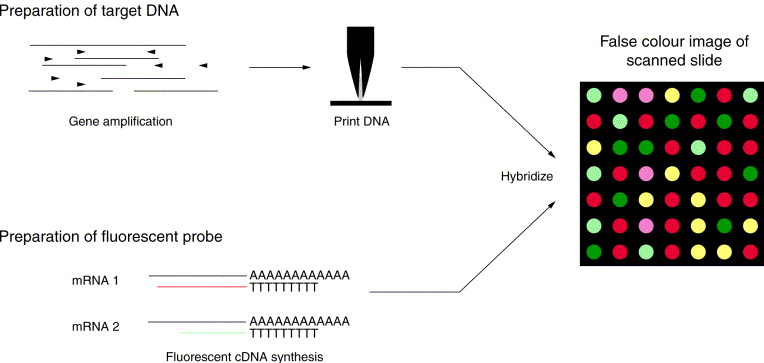DNA microarray, also known as DNA chip assay, is a predominant method for the measurement and profiling of gene expressions. As a high-throughput technology, DNA microarray allows detection of the expression of thousands of genes at the same time.
The core component of the DNA microarray is a DNA chip that contains a large number of specific DNA sequences, arranged in arrays that serve as “probes”. A typical microarray experiment requires the following steps (Figure 1):
 Figure 1. Principle steps for a typical DNA microarray experiment (Kehoe, Villand et al. 1999).
Figure 1. Principle steps for a typical DNA microarray experiment (Kehoe, Villand et al. 1999).
Compared to other gene expression assays, the DNA microarray has the following advantages:
Lifeasible is a leading plant biotechnology company with rich experiences in microarray-based studies of plant systems. We provide customized DNA microarray services with high quality and efficiency at competitive rates. Moreover, our featured one-stop service covers all steps of the experiment, including probe design, chip fabrication, assay performance, as well as data collection, analysis, and interpretation. With superior expertise in plant genomics and plant molecular biology, our goal is to provide our customers worldwide with diverse research plans and options, capable of serving a wide range of experimental purposes, including but not limited to:
Welcome to contact us for questions, inquiries or collaborations.
Reference:
Lifeasible has established a one-stop service platform for plants. In addition to obtaining customized solutions for plant genetic engineering, customers can also conduct follow-up analysis and research on plants through our analysis platform. The analytical services we provide include but are not limited to the following:
STU-CRISPR System Improves Plant Genome Editing Efficiency
April 19, 2024
Application of Exosomes in Facial Beauty
April 12, 2024